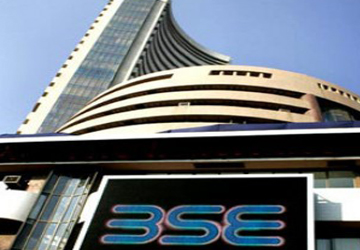
The regulator’s misguided moves will further alienate retail investors
In the 20 years since India started its economic liberalisation programme under Dr Manmohan Singh, our investor population has shrunk from 20 million to 8 million (figures from government reports). In fact, the situation is more frightening. Deena Mehta, a firebrand director of the Bombay Stock Exchange (BSE) who never minces words, tells us that the active investor population is likely to be in the region of three-four million. And, she says the picture will be far more frightening if one looks at the number of active traders in the derivatives segment which is just around 200,000. The BSE chief, Madhu Kannan, also corroborates these numbers.
Why haven’t alarm bells started ringing long ago? Well, because we have all allowed ourselves to be fooled for a long time by the movement of the stock indices and the growth in trading volumes reported by stock exchanges every year. Initially, it led us to believe that Indians were participating in India’s growth in a big way and that the automation of the entire trading system and move to paperless trading had caused a paradigm shift in investment attitudes. The fact that daily trading volumes had risen from Rs300 crore in 1992 to around Rs10,000 crore simply silenced anyone who raised uncomfortable questions like the fact that many of our metros and B-cities don’t even have electricity for hours on end, when the market is open for trading. Investor groups who pointed out that mandatory dematerialisation was forcing investors into dangerous territory—of signing power of attorney (PoA) in favour of brokers or signing blank depository slips—were ignored. Many cities have only one or two depository participants (DPs) and customers are at their mercy. Investor complaints about the high cost of entry to the capital markets fell on deaf ears. The plea that listed companies, which are the biggest beneficiaries of compulsory dematerialisation (they could wind up their share transfer departments) should bear some costs, has been ignored for the past decade.
It took a long time before the rot was exposed. The pathetic number of active depository accounts was the first signal. The National Securities Depository has only 1.02 crore active demat accounts with PAN numbers; the Central Depository Services has 67.65 lakh. As a thumb rule, these 1.69 crore accounts would be divided by four to eliminate multiple accounts. This gives us the active investor population number of around four million that Deena Mehta mentions. Another bit of evidence is that retail brokerage firms, which opened thousands of branches in anticipation of exponential growth in retail investment, had shut down their offices by the hundreds. Their stagnating share prices reflect the state of their business.
Those of us who flagged the fact of India’s dwindling retail investor population were told that we are moving in the right direction—to an institutional market. This was reflected in growing trading volumes. Institutional investment has, indeed, grown phenomenally—we have foreign institutional investment and domestic investment from mutual funds and insurance companies that have raised humungous sums of money through unit-linked insurance plans (ULIPs).
This bright picture has also begun to fade in the past year. Our booming, double-digit economic growth was at odds with initial public offerings (IPOs) struggling to raise money. Moneylife did a Cover Story (11 March 2010) on the vanishing retail investor and how the employee and retail quota of most IPOs received less than 20% subscription. The government was forced to take notice only when its disinvestment programme threatened to come unstuck.
The situation was only exacerbated by the Securities and Exchange Board of India’s (SEBI) many Tughlak-like (this description comes from some SEBI insiders, not us) actions and rule changes that have spooked the financial markets. It caused a flood of money to move out of mutual funds since August 2009, when SEBI eliminated entry-loads that put many financial advisors nearly out of business. SEBI next tried to encroach on the insurance regulator’s turf, but it was more than two months before the government realised the folly of encouraging such actions and took some stunningly decisive action, in the form of an ordinance, to demarcate the turf of various regulators.
Even so, the only real sign of panic, ironically enough, is the SEBI-led drive to force all market intermediaries to launch investor education programmes. Stock exchanges, mutual funds and despositories have all been ordered to launch investor education programmes as if they are a panacea. The NSE, which has the biggest kitty of investor protection funds (running into hundreds of crores), is buying expensive television time and print space. These days, it has the important side-benefit of keeping the big media silenced. The depositories are working with the regulators, intermediaries and the government of India’s Disinvestment Department to persuade public sector employees to open demat accounts, at least to invest in their own shares.
Is that the answer to the problem of vanishing retail investors? What happens if PSU stock prices fall after listing (most of them are at an artificial high because of negligible floating stock)? Will seminars and sermons revive investor interest?
Our own weekly workshops at Moneylife Foundation reveal that financial literacy is pathetically low in India. Most people with investible surpluses are clueless even on concepts such as credit scores, the cost and fees attached to various financial products and fund performance. Many people have lost heavily by trusting financial advisors or portfolio management services, who caused them heavy losses through reckless churning of portfolios. How will the SEBI-mandated lectures and sermons win back their trust? Is this really an answer, when the regulator continues to be out of touch with investors and their issues? — Sucheta Dalal